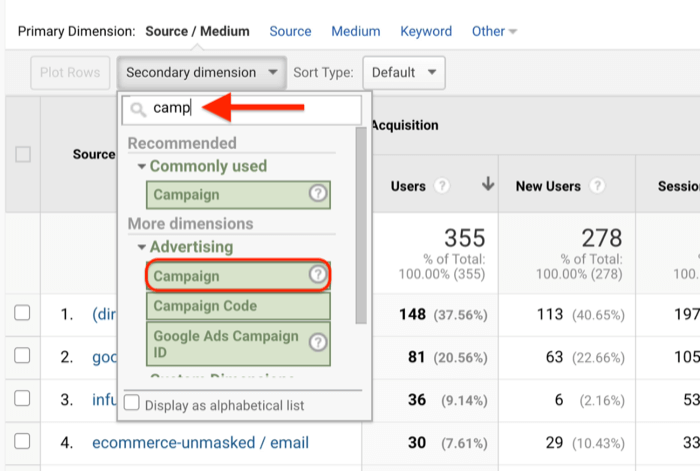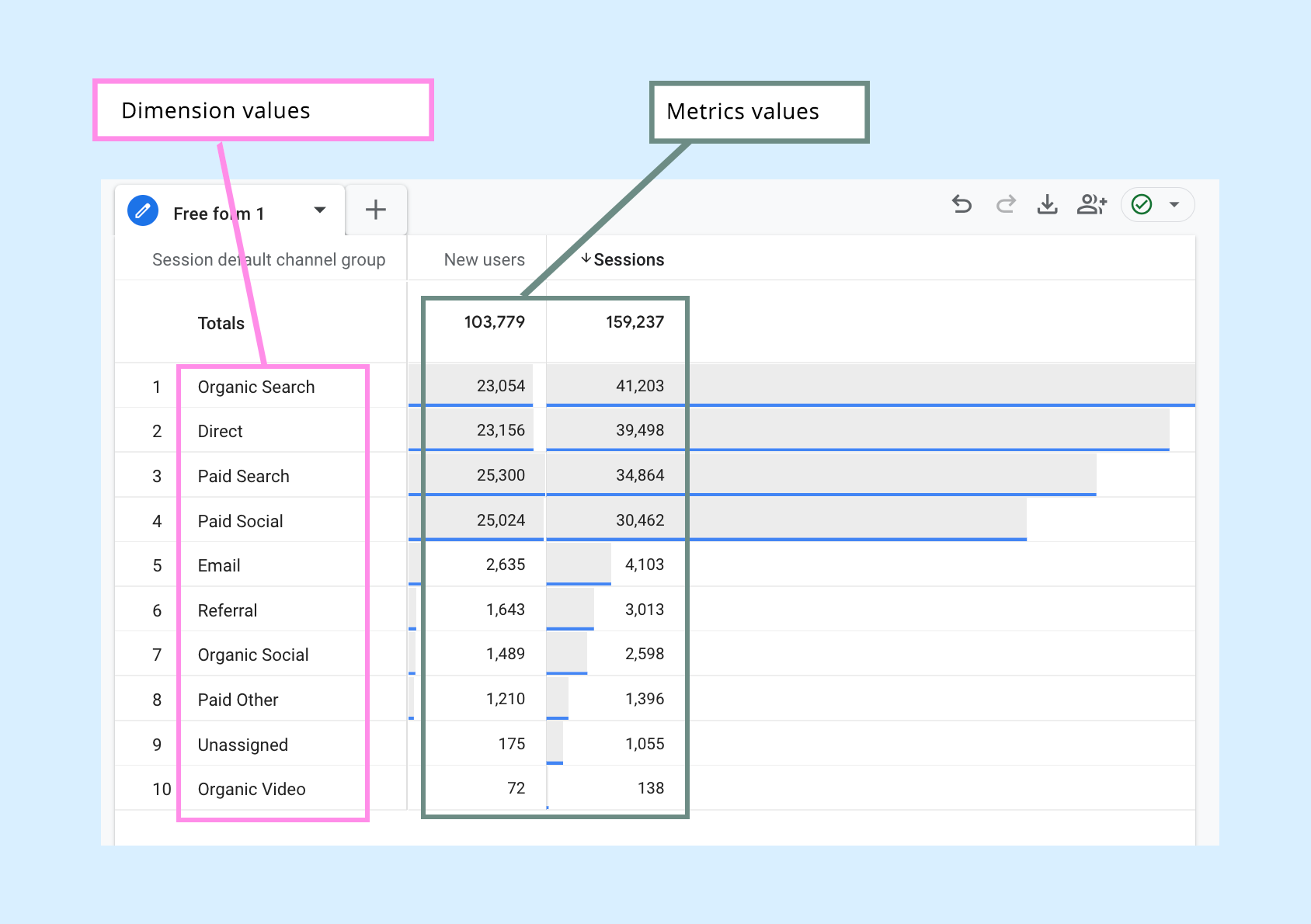Comprehending the Concept of a 'Secondary Dimension' in Google Analytics: What Does It Mean?
Comprehending the Concept of a 'Secondary Dimension' in Google Analytics: What Does It Mean?
Blog Article
Translating the Value of Additional Dimension in Google Analytics: Everything About Its Significance and Impact
In the realm of electronic analytics, the use of secondary dimensions within Google Analytics functions as a critical tool for discerning deeper layers of data understandings. The significance of additional measurements hinges on their ability to give a nuanced view of customer actions and communication with an internet site or system. By studying information past surface-level metrics, businesses can open a wide range of info that shapes tactical choices and refines advertising and marketing initiatives. This exploration right into the world of additional dimensions not just provides a detailed understanding of user involvement yet likewise clarifies the intricate characteristics that drive online efficiency.
Recognizing Additional Dimensions in Google Analytics
The understanding of secondary measurements in Google Analytics is important for gaining deeper understandings into customer behavior and web site performance. While key measurements offer fundamental data factors such as website traffic resources and page sights, second dimensions allow for a more nuanced analysis by offering additional context to these primary metrics. By including secondary dimensions, individuals can section and filter their data to discover patterns and patterns that might not be immediately evident.

Revealing the Perks of Secondary Dimensions
Building upon the foundational understanding of additional measurements in Google Analytics, checking out the advantages they supply exposes important insights for boosting data evaluation and decision-making. By integrating second dimensions, users can dive much deeper right into their data, obtaining a much more thorough sight of user behavior, material efficiency, and other essential metrics. One of the key advantages is the capability to segment data, allowing for a much more granular evaluation of numerous dimensions such as traffic resources, devices, demographics, and more. When looking at information in aggregate., this segmentation enables users to identify patterns, trends, and correlations that may not be evident (what is a “secondary dimension” in google analytics?).
In addition, additional dimensions offer context to primary data, offering additional layers of information that can assist in recognizing user interactions and choices. This improved understanding can lead critical decision-making, bring about more targeted marketing projects, web site optimizations, and overall better efficiency. Essentially, secondary measurements act as a powerful tool for unlocking much deeper insights and maximizing the utility of Google Analytics for companies and internet site owners.
Leveraging Second Measurements for Boosted Insights
By using the power of additional dimensions in Google Analytics, companies can discover deeper insights that drive notified decision-making and calculated optimization initiatives. Leveraging second dimensions permits businesses to dive beyond surface-level information and gain a much more extensive understanding of user behavior, target market demographics, website traffic sources, and website efficiency. By incorporating primary measurements like web traffic sources with secondary measurements such as geographic place or gadget classification, businesses can recognize which gadgets or areas are driving the most beneficial web traffic to their site.
In addition, secondary dimensions make it possible for services to sector and examine data a lot more effectively, helping them identify trends, patterns, and possibilities that might have otherwise gone unnoticed. By utilizing additional measurements, services can customize their advertising methods, material, and individual experience to better meet the demands and preferences of their target audience. Fundamentally, leveraging secondary dimensions in Google Analytics equips organizations to make data-driven decisions that bring about enhanced performance, enhanced ROI, and lasting growth.

Impact of Additional Measurements on Data Evaluation
Enhancing data analysis through the use of additional measurements in Google Analytics gives companies with a much deeper understanding of their on-line performance metrics. By integrating secondary measurements, such as time of day, geographic area, or tool classification, services can uncover valuable insights that might have been ignored with main measurements alone. This improved degree of granularity enables even more precise division of data, enabling organizations to identify patterns, fads, and connections that can drive critical decision-making.

Taking Full Advantage Of Possible: Additional Dimensions Strategies
The calculated utilization of additional dimensions in Google Analytics extends past improving information analysis; it involves crafting targeted strategies to unlock the full potential of valuable insights for service development. By employing second dimensions efficiently, organizations can dive much deeper right into their site web traffic, individual actions, and marketing projects to extract actionable understandings. One crucial technique is to incorporate second measurements with main dimensions to acquire a detailed view of individual interactions. Coupling the main measurement of 'source/medium' with second measurements like 'touchdown web page' or 'tool category' can expose which channels are driving traffic to go to my blog certain pages or how user actions varies across gadgets.
Furthermore, making use of second dimensions to segment data based upon user demographics, actions, or technology can assist companies customize their marketing initiatives to certain audience sectors. This targeted technique can lead to boosted conversion prices, boosted individual experiences, and ultimately, enhanced ROI. By making the most of the possibility of additional dimensions in Google Analytics, companies can make informed decisions, optimize their online visibility, and drive sustainable development.
Verdict
In final thought, additional dimensions in Google Analytics play an essential duty in giving deeper understandings and boosting information evaluation. By using second dimensions effectively, businesses can acquire a much more detailed understanding of customer behavior and web site efficiency. Integrating additional measurements right into information analysis techniques can result in more informed decision-making and improved total performance. It is important for businesses to take advantage of the power of secondary measurements to maximize their prospective and achieve higher success in their on the internet ventures (what is a “secondary dimension” in google analytics?).
While primary measurements offer basic data points such as traffic resources and web page views, additional measurements permit for a much more nuanced analysis by giving added context to these key metrics. By integrating primary measurements like web traffic resources with secondary dimensions such as geographical place or tool classification, services can determine which devices or areas are driving the most beneficial web traffic to their internet site.
By incorporating secondary measurements, such as time of day, geographical place, or tool group, businesses can reveal useful insights that might have been forgotten with primary dimensions alone. One key technique is to combine secondary measurements with primary dimensions to acquire a thorough sight of individual interactions. Matching the key dimension of 'source/medium' with secondary dimensions like 'touchdown page' or our website 'tool category' can reveal which networks are driving website traffic to specific pages or exactly how discover this individual actions varies throughout gadgets.
Report this page